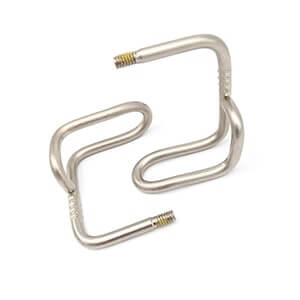Get unique, complex parts easily. No matter your requirements, Chaoyi Spring creates hard-to-produce coil springs and wire forms.
Let us help you create the custom wire form you need, from S-hooks and J-hooks to utility hooks and more.
We work closely with customers across a wide range of industries, helping them design and manufacture made-to-order parts.
Why choose Chaoyi Spring? We prioritize customer-focused collaboration, modern equipment and the latest technology to make your parts per print.
Find the information and guidance you need, from measuring a spring to learning about materials, placing an order and much more.
In the realm of springs, lash tensions stand as a crucial concept that significantly impacts the performance and lifespan of these essential components. Lash tensions are a result of the


In the realm of springs, lash tensions stand as a crucial concept that significantly impacts the performance and lifespan of these essential components. Lash tensions are a result of the intricate interplay between the spring's material properties, design, and loading conditions. Understanding lash tensions is paramount for engineers, designers, and anyone involved in selecting and utilizing springs. This article delves into the depths of lash tensions, exploring its causes, effects, and methods for managing it, empowering you to optimize your spring applications.

Lash tensions, also known as spring lash or spring set, represent the amount of tension or compression that a spring experiences when it is initially installed or subjected to a load. This tension arises from the inherent elasticity of the spring material and the way it responds to the forces applied to it. In essence, lash tensions quantify the inherent 'tightness' or 'slack' present in a spring.
Lash tensions play a pivotal role in the functionality and longevity of springs. It can influence the following aspects:
Lash tensions can arise from various factors, including:
Effective lash tension management is critical for achieving optimal spring performance and reliability. Here are some strategies:
Let's consider a real-world example to illustrate the importance of lash tensions. Imagine a suspension system in a car, where springs are used to absorb shocks and provide a smooth ride. In sandy springs, the constant exposure to sand and dust can lead to accumulation of debris on the spring coils, which can affect the spring's load-bearing capacity. If the spring is preloaded with a high lash tension, it may not be able to fully expand and compress, resulting in an uncomfortable ride and increased wear on other components. Therefore, regular cleaning and maintenance are crucial to ensure optimal lash tension and performance of the suspension springs.
Lash tensions are a critical aspect of spring design and application. They can profoundly impact the performance, durability, and noise levels of spring-based systems. By understanding the causes and effects of lash tensions, and employing proper management strategies, you can optimize your spring applications for optimal functionality and longevity. Remember, achieving the perfect balance of lash tensions is key to creating reliable and efficient mechanical systems.
Ultimately, lash tensions are a fundamental concept that every engineer, designer, and spring user should grasp. By understanding their causes, effects, and methods for managing them, you can ensure your springs function optimally, maximizing their performance and longevity. Whether you're dealing with delicate watch springs or heavy-duty suspension systems, the principles of lash tensions remain vital for achieving reliable and efficient mechanical systems. This article has aimed to provide a comprehensive guide to help you navigate the complexities of lash tensions, empowering you to make informed decisions about spring selection and implementation.
Browse some of the custom wire forms and springs that we manufacture. Don’t see what you need? We specialize in made-to-order products that meet your application requirements.
Visit Our GalleryNeed a custom wire form or coil spring? We make it work. Fill out the contact form and a representative will respond within 1 business day. If you have a PDF or CAD file, you can submit to request a quote.